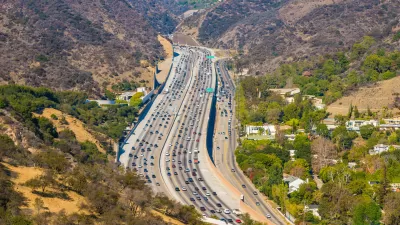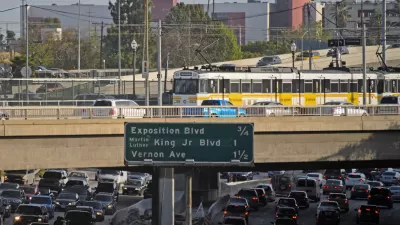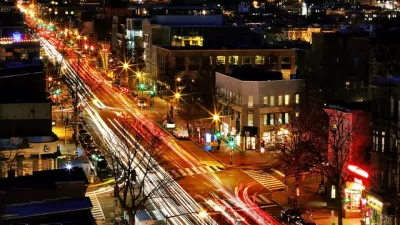Charging based on demand and for access is commonplace—except on roads.

"Riding the Metro at peak time, splurging on an additional fee to avoid the lunch line, receiving a discount for seeing a movie when few others choose to—we accept congestion pricing as a normal feature of everyday life," writes DJ Gribbin. So why, he wonders, is congestion pricing on roads consistently met with such resistance?
The time, economic, and environmental benefits of such strategies are clear, says Gribbin. And a variety of mechanisms exist for implementing congestion pricing, including managed lanes, high-occupancy vehicle lanes, and cordon pricing.
But a lack of action at the state and federal levels means cities have to step up to put congestion pricing into place on roadways. Gribbin points to the cordon pricing coming to New York City in 2021, a plan expected to generate $1.1 billion a year for transit service improvements. Washington, D.C., Chicago, and Los Angeles are also exploring congestion pricing options. "If all goes well, commuters in these three cities will have the ability to recover some of the 70 to 120 hours lost to congestion every year while reducing their environmental impact," he adds.
FULL STORY: Congestion pricing is all around us. Why is it taboo on our roads?

Alabama: Trump Terminates Settlements for Black Communities Harmed By Raw Sewage
Trump deemed the landmark civil rights agreement “illegal DEI and environmental justice policy.”

Study: Maui’s Plan to Convert Vacation Rentals to Long-Term Housing Could Cause Nearly $1 Billion Economic Loss
The plan would reduce visitor accommodation by 25% resulting in 1,900 jobs lost.

Planetizen Federal Action Tracker
A weekly monitor of how Trump’s orders and actions are impacting planners and planning in America.

Wind Energy on the Rise Despite Federal Policy Reversal
The Trump administration is revoking federal support for renewable energy, but demand for new projects continues unabated.

Passengers Flock to Caltrain After Electrification
The new electric trains are running faster and more reliably, leading to strong ridership growth on the Bay Area rail system.

Texas Churches Rally Behind ‘Yes in God’s Back Yard’ Legislation
Religious leaders want the state to reduce zoning regulations to streamline leasing church-owned land to housing developers.
Urban Design for Planners 1: Software Tools
This six-course series explores essential urban design concepts using open source software and equips planners with the tools they need to participate fully in the urban design process.
Planning for Universal Design
Learn the tools for implementing Universal Design in planning regulations.
Caltrans
Smith Gee Studio
Institute for Housing and Urban Development Studies (IHS)
City of Grandview
Harvard GSD Executive Education
Toledo-Lucas County Plan Commissions
Salt Lake City
NYU Wagner Graduate School of Public Service





























